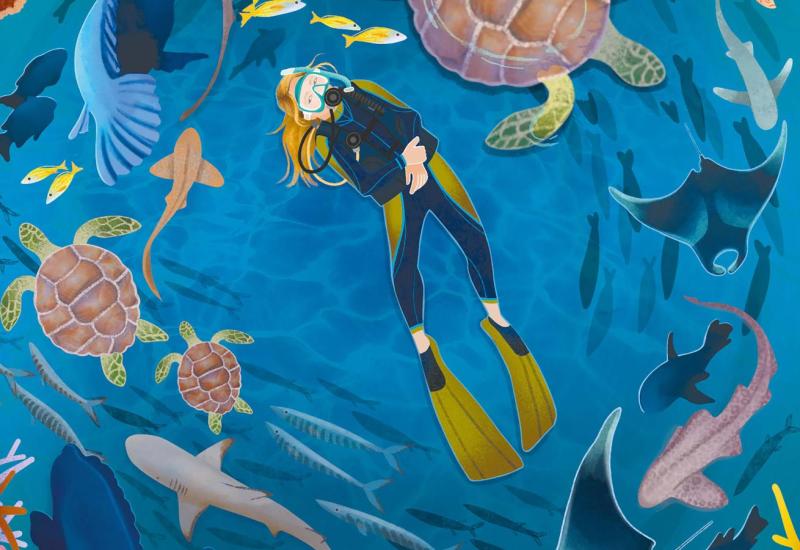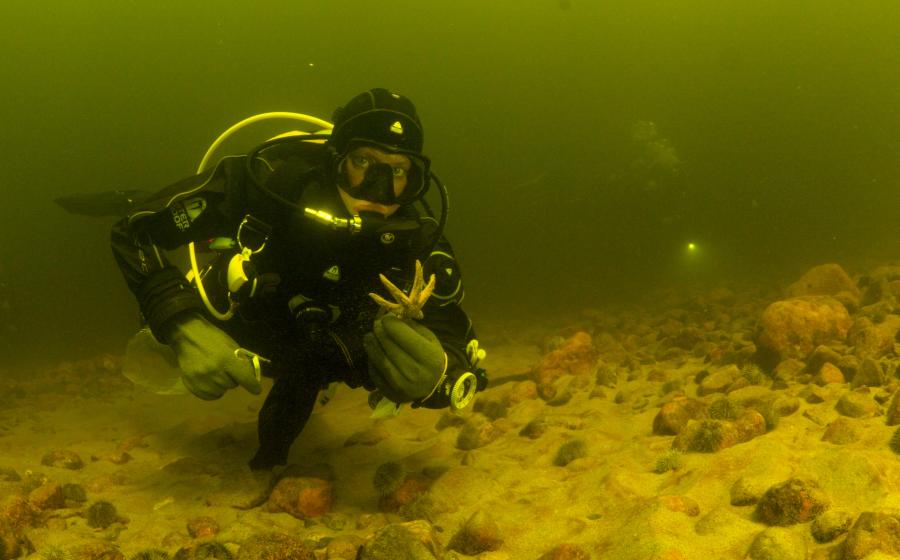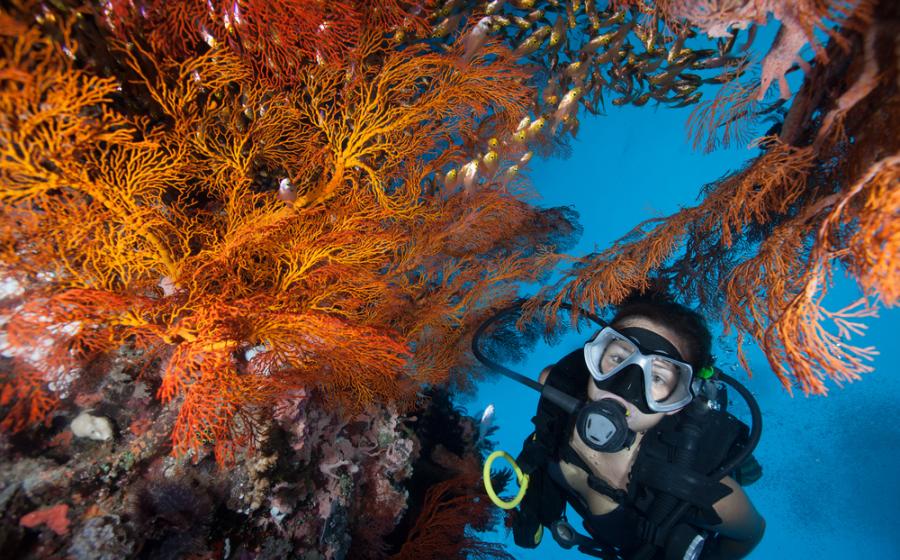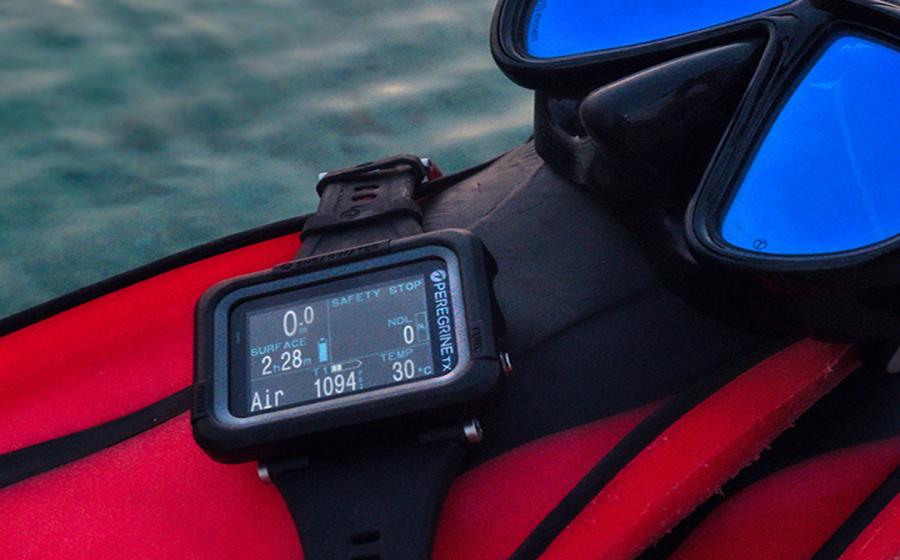12 Amazing Places For Wreck Diving

Wreck Diving The Bianca C
The Bianca C sank in Grand Anse, Grenada, after a boiler-room explosion.
Ty Sawyer
Some of the coolest reefs are actually wrecks that have been transformed by marine life into amazing underwater habitats for all kinds of marine life. Here’s a list of exploration-worthy vessels you might want to add to your wreck diving bucket list.
Bianca C
Location: Grand Anse, Grenada
In October of 1961, the Bianca C suffered a boiler-room explosion while it was anchored in St. George’s Harbour. A fire erupted and, thanks in large part to fast response by the people of St. George’s, all but one of the ship’s 673 occupants were rescued (one crewman later died ashore). The fire was still raging when the Royal Navy arrived two days later, and the Bianca C was taken in tow, but sank in 167 feet of water. Today, the Bianca C is the largest diveable wreck in the Caribbean. While several of its fire-weakened decks collapsed, and some parts of it are unrecognizable, other details remain quite distinct — scuba divers usually begin their dive with a dip in its midship swimming pool. Although the rear third of the majestic ship has fallen away due to 50 years of storms, the Bianca C remains an objective worthy of several dives. For those so trained, penetration possibilities still abound. And even if they don’t have wreck diving training, advanced divers will still be fascinated by the microenvironment created by the big wreck — it is now well-decorated and hosts a community of residents, including large, green sea turtles.
Spiegel Grove
Location: Key Largo, Florida Keys, USA
There’s no better initiation to Florida Keys wreck diving than by exploring its most famous — the USS Spiegel Grove, a U.S. Navy ship that is one of the world’s largest purposely sunk wrecks. After releasing from the mooring line, the hulking ship comes into view. The main deck looks as long as a football field, maybe two. Only instead of grass, the “turf” on this field is covered in green lobed star corals and assorted whips and fans. Shining a dive light inside the wheelhouse’s interior walls reveal circular orange cup corals so thick they appear to be serving as insulation.
Pelinaion
Location: St. David’s Head, Bermuda
This former Greek steamer once plied the seas with 385 feet of keel and a 50-foot beam. But upon its arrival in Bermuda in 1939, her captain miscalculated her position because the St. David’s Lighthouse was under a blackout due to the war. A few hundred feet from shore, it struck the reef. The remains of the Pelinaion are now scattered on the reef. At one point, the ship’s steel hull bridges two sections of reef, creating a sort of low, dark, manmade cavern, which is home to lurking groupers. In another area, stone and steel have created a descending, cave-like chute that goes from relatively shallow inshore water near the bow, and descends to deeper water outside the reef. Dive this part when conditions are right, and you might find tarpon on the prowl. And in between there are impressively recognizable pieces of the ship — its bow, spare prop, propeller shaft and, most impressively, the towering hulk of a huge triple-expansion steam engine.
YO-257
Location: Oahu, Hawaii, USA
The YO-257 is a former U.S. Navy yard oiler lying off Diamondhead State Park near Waikiki. After a long and unremarkable naval career, in 1989, the vessel was purchased by Atlantis Submarines Hawaii, cleaned and placed on the ocean floor at 100 feet to provide a focal point for the company’s extremely popular Waikiki submarine tours. Oahu scuba divers were direct beneficiaries of this act. While the island’s waters are steeped in history, and several genuine lost-in-wartime wrecks lie on the bottom surrounding the island, only one (that of a Corsair fighter bomber) is accessible for recreational wreck diving. The rest are either off-limits (such as the naval vessels in Pearl Harbor). YO-257, on the other hand, is not only accessible, it offers a picture-perfect swim-through on the stern.
USS Coolidge
Location: Vanuatu
Before World War II, the passenger liner SS President Coolidge transported the well-to-do around the Pacific in comfort and style. When the ship was drafted for service as a troop carrier, she was painted battleship gray and stripped of most of her finery, but some luxury touches remained, like the fireplace in the main smoking salon, which is adorned with a magnificently carved Elizabethan Lady and her mystical unicorn. On a mission delivering the 43rd Infantry to Espiritu Santo in New Hebrides (now Vanuatu), the Coolidge struck “friendly” mines on her approach to the harbor. The quick-thinking captain put her on a reef, saving nearly all of the 5,440 troops aboard before the liner slid under. Although the ship has been shuffled around by earthquakes over the decades, the holds remain intact filled with jeeps and artillery, making Coolidge a seductive wreck that attracts seasoned scuba divers from all over the world.
Jake Seaplane
Location: Palau
Small but mighty, the Jake Seaplane sits atop a reef in only 60 feet of water and delivers the thrill of wreck diving a remarkably intact World War II aircraft. There’s something about the plane’s stance atop the reef that suggests that it’s ready to fly off into battle, and if you squeeze inside the cockpit, you get a sense of what it was like for the plane’s Japanese pilots. Palau’s Koror Harbor was an active Japanese seaplane base, buzzing with Aichi E13A aircraft (or “Jakes” in Allied parlance) until March 1944 when the United States launched Operation Desecrate One. It’s unknown exactly how this particular Jake found its way to the bottom, but it remains to this day an intriguing bit of history just a five-minute boat ride from Koror dive shops.
U-352
Location: North Carolina, USA
U-352 is the premier wreck of North Carolina’s Outer Banks—and in an area known as the “Graveyard of the Atlantic” that’s saying something. On May 9, 1942, the German sub mistakenly fired on the U.S. Coast Guard cutter Icarus, which dodged the torpedoes and answered with a depth charge attack that forced the U-352 to the surface. The sub’s commander ordered his crew to scuttle their vessel and abandon ship. Although its outer hull has long since rusted away, the pressure hull remains intact, sitting on the sandy bottom with a 45-degree list to starboard.
Shinkoku Maru
Location: Chuuk Lagoon, Micronesia
The tanker Shinkoku Maru was built in 1941 for the Japanese navy and took part in the Pearl Harbor attack as a support ship. In a twist of fate, the 500-foot vessel was sunk a little more than three years later in the U.S. sneak attack on Truk Lagoon known as Operation Hailstone. American Avenger topedo bombers fired seven times at her, the last one hitting her aft starboard side and sending her to the bottom. Today, this ship is covered with coral formations and considered one of the best night dives among the numerous wrecks of Chuuk Lagoon.
USAT Liberty
Location: Tulamben, Bali, Indonesia
A World War II cargo ship brought to her end by a Japanese torpedo, the USAT Liberty is one of Indonesia’s most popular wreck diving sites. Her 400-foot body, broken in many places but beautifully overgrown with colorful soft corals and crinoids, rests on a steep, black-sand slope just a stone’s throw off Tulamben’s cobble shore. Starting at the stern in just 25 feet, the critter-encrusted wreckage angles down to the bow section at 110 feet. The ship also hosts more than 400 species of fish, including thousands of bigeye jacks, which can be found swirling over the wreck like a silver storm cloud.
Odyssey
Location: Roatan, Bay Islands, Honduras
Diving this 300-foot freighter, intentionally sunk at a site called Mud Hole, is a treat. The Odyssey is split into three pieces and is perfectly positioned between two lovely coral reefs. The setting is inspirational, but it’s the lofty vertical presence of the stern that grabs underwater photographers’ attention. Her wheelhouse is nearly 85 feet tall. The complex network of steel railings and stairways presents a visage reminiscent of New York City fire escapes. Definitely bring your camera while wreck diving here: there is lots of colorful encrusting growth on this artificial reef.
USS Kittiwake
Location: Grand Cayman, Cayman Islands
Since its sinking in January 2011, the 251-foot former USS Kittiwake has been covered in marine life and fish life like horse-eye jacks, sergeant majors, blue tangs and squirrelfish – and has won the hearts of scuba divers. The most exciting new resident of this wreck diving site is a 100-pound goliath grouper that’s often found near the wreck’s propeller. The former Chanticleer-class submarine-rescue vessel sits on the seafloor off Seven Mile Beach, and rises to within 15 feet of the surface. The Kittiwake had an illustrious service for more than 54 years, being decommissioned September 30, 1994.
Superior Producer
Location: Curaçao
Overloaded with general merchandise, Superior Producer rolled just outside the entrance to Willemstad Harbour, sinking upright in 100 feet of water. Curaçao’s premier wreck diving site is a must-do, and most operators will dive it at least once a week. The Producer now wears a coat of orange cup corals, and a full spectrum of colorful encrusting sponges. Look for silversides in the wheelhouse, as well as grouper and barracuda.
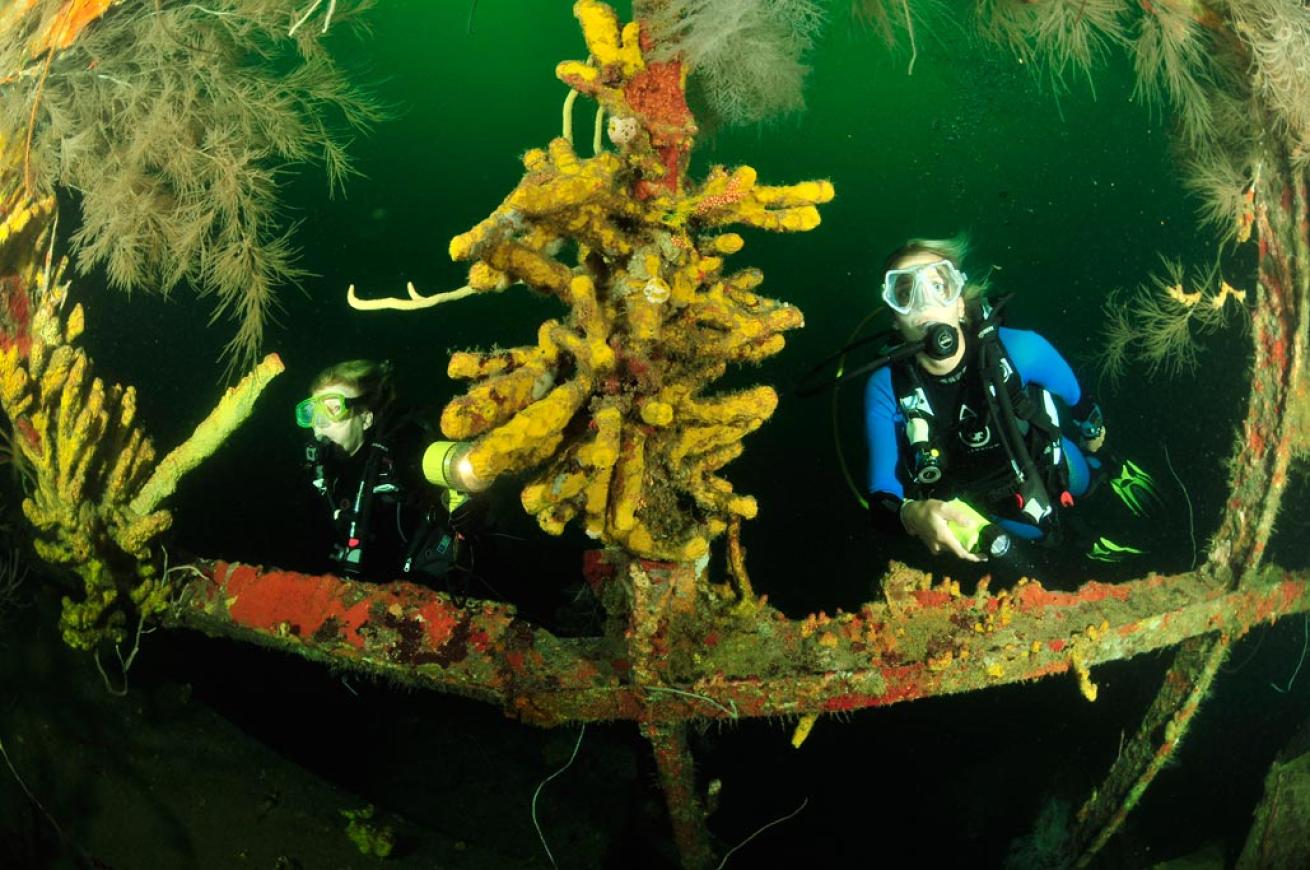
Ty SawyerWreck Diving The Bianca C
The Bianca C sank in Grand Anse, Grenada, after a boiler-room explosion.
Some of the coolest reefs are actually wrecks that have been transformed by marine life into amazing underwater habitats for all kinds of marine life. Here’s a list of exploration-worthy vessels you might want to add to your wreck diving bucket list.
Bianca C
Location: Grand Anse, Grenada
In October of 1961, the Bianca C suffered a boiler-room explosion while it was anchored in St. George’s Harbour. A fire erupted and, thanks in large part to fast response by the people of St. George’s, all but one of the ship’s 673 occupants were rescued (one crewman later died ashore). The fire was still raging when the Royal Navy arrived two days later, and the Bianca C was taken in tow, but sank in 167 feet of water. Today, the Bianca C is the largest diveable wreck in the Caribbean. While several of its fire-weakened decks collapsed, and some parts of it are unrecognizable, other details remain quite distinct — scuba divers usually begin their dive with a dip in its midship swimming pool. Although the rear third of the majestic ship has fallen away due to 50 years of storms, the Bianca C remains an objective worthy of several dives. For those so trained, penetration possibilities still abound. And even if they don’t have wreck diving training, advanced divers will still be fascinated by the microenvironment created by the big wreck — it is now well-decorated and hosts a community of residents, including large, green sea turtles.
Spiegel Grove
Location: Key Largo, Florida Keys, USA
There’s no better initiation to Florida Keys wreck diving than by exploring its most famous — the USS Spiegel Grove, a U.S. Navy ship that is one of the world’s largest purposely sunk wrecks. After releasing from the mooring line, the hulking ship comes into view. The main deck looks as long as a football field, maybe two. Only instead of grass, the “turf” on this field is covered in green lobed star corals and assorted whips and fans. Shining a dive light inside the wheelhouse’s interior walls reveal circular orange cup corals so thick they appear to be serving as insulation.
Pelinaion
Location: St. David’s Head, Bermuda
This former Greek steamer once plied the seas with 385 feet of keel and a 50-foot beam. But upon its arrival in Bermuda in 1939, her captain miscalculated her position because the St. David’s Lighthouse was under a blackout due to the war. A few hundred feet from shore, it struck the reef. The remains of the Pelinaion are now scattered on the reef. At one point, the ship’s steel hull bridges two sections of reef, creating a sort of low, dark, manmade cavern, which is home to lurking groupers. In another area, stone and steel have created a descending, cave-like chute that goes from relatively shallow inshore water near the bow, and descends to deeper water outside the reef. Dive this part when conditions are right, and you might find tarpon on the prowl. And in between there are impressively recognizable pieces of the ship — its bow, spare prop, propeller shaft and, most impressively, the towering hulk of a huge triple-expansion steam engine.
YO-257
Location: Oahu, Hawaii, USA
The YO-257 is a former U.S. Navy yard oiler lying off Diamondhead State Park near Waikiki. After a long and unremarkable naval career, in 1989, the vessel was purchased by Atlantis Submarines Hawaii, cleaned and placed on the ocean floor at 100 feet to provide a focal point for the company’s extremely popular Waikiki submarine tours. Oahu scuba divers were direct beneficiaries of this act. While the island’s waters are steeped in history, and several genuine lost-in-wartime wrecks lie on the bottom surrounding the island, only one (that of a Corsair fighter bomber) is accessible for recreational wreck diving. The rest are either off-limits (such as the naval vessels in Pearl Harbor). YO-257, on the other hand, is not only accessible, it offers a picture-perfect swim-through on the stern.
USS Coolidge
Location: Vanuatu
Before World War II, the passenger liner SS President Coolidge transported the well-to-do around the Pacific in comfort and style. When the ship was drafted for service as a troop carrier, she was painted battleship gray and stripped of most of her finery, but some luxury touches remained, like the fireplace in the main smoking salon, which is adorned with a magnificently carved Elizabethan Lady and her mystical unicorn. On a mission delivering the 43rd Infantry to Espiritu Santo in New Hebrides (now Vanuatu), the Coolidge struck “friendly” mines on her approach to the harbor. The quick-thinking captain put her on a reef, saving nearly all of the 5,440 troops aboard before the liner slid under. Although the ship has been shuffled around by earthquakes over the decades, the holds remain intact filled with jeeps and artillery, making Coolidge a seductive wreck that attracts seasoned scuba divers from all over the world.
Jake Seaplane
Location: Palau
Small but mighty, the Jake Seaplane sits atop a reef in only 60 feet of water and delivers the thrill of wreck diving a remarkably intact World War II aircraft. There’s something about the plane’s stance atop the reef that suggests that it’s ready to fly off into battle, and if you squeeze inside the cockpit, you get a sense of what it was like for the plane’s Japanese pilots. Palau’s Koror Harbor was an active Japanese seaplane base, buzzing with Aichi E13A aircraft (or “Jakes” in Allied parlance) until March 1944 when the United States launched Operation Desecrate One. It’s unknown exactly how this particular Jake found its way to the bottom, but it remains to this day an intriguing bit of history just a five-minute boat ride from Koror dive shops.
U-352
Location: North Carolina, USA
U-352 is the premier wreck of North Carolina’s Outer Banks—and in an area known as the “Graveyard of the Atlantic” that’s saying something. On May 9, 1942, the German sub mistakenly fired on the U.S. Coast Guard cutter Icarus, which dodged the torpedoes and answered with a depth charge attack that forced the U-352 to the surface. The sub’s commander ordered his crew to scuttle their vessel and abandon ship. Although its outer hull has long since rusted away, the pressure hull remains intact, sitting on the sandy bottom with a 45-degree list to starboard.
Shinkoku Maru
Location: Chuuk Lagoon, Micronesia
The tanker Shinkoku Maru was built in 1941 for the Japanese navy and took part in the Pearl Harbor attack as a support ship. In a twist of fate, the 500-foot vessel was sunk a little more than three years later in the U.S. sneak attack on Truk Lagoon known as Operation Hailstone. American Avenger topedo bombers fired seven times at her, the last one hitting her aft starboard side and sending her to the bottom. Today, this ship is covered with coral formations and considered one of the best night dives among the numerous wrecks of Chuuk Lagoon.
USAT Liberty
Location: Tulamben, Bali, Indonesia
A World War II cargo ship brought to her end by a Japanese torpedo, the USAT Liberty is one of Indonesia’s most popular wreck diving sites. Her 400-foot body, broken in many places but beautifully overgrown with colorful soft corals and crinoids, rests on a steep, black-sand slope just a stone’s throw off Tulamben’s cobble shore. Starting at the stern in just 25 feet, the critter-encrusted wreckage angles down to the bow section at 110 feet. The ship also hosts more than 400 species of fish, including thousands of bigeye jacks, which can be found swirling over the wreck like a silver storm cloud.
Odyssey
Location: Roatan, Bay Islands, Honduras
Diving this 300-foot freighter, intentionally sunk at a site called Mud Hole, is a treat. The Odyssey is split into three pieces and is perfectly positioned between two lovely coral reefs. The setting is inspirational, but it’s the lofty vertical presence of the stern that grabs underwater photographers’ attention. Her wheelhouse is nearly 85 feet tall. The complex network of steel railings and stairways presents a visage reminiscent of New York City fire escapes. Definitely bring your camera while wreck diving here: there is lots of colorful encrusting growth on this artificial reef.
USS Kittiwake
Location: Grand Cayman, Cayman Islands
Since its sinking in January 2011, the 251-foot former USS Kittiwake has been covered in marine life and fish life like horse-eye jacks, sergeant majors, blue tangs and squirrelfish – and has won the hearts of scuba divers. The most exciting new resident of this wreck diving site is a 100-pound goliath grouper that’s often found near the wreck’s propeller. The former Chanticleer-class submarine-rescue vessel sits on the seafloor off Seven Mile Beach, and rises to within 15 feet of the surface. The Kittiwake had an illustrious service for more than 54 years, being decommissioned September 30, 1994.
Superior Producer
Location: Curaçao
Overloaded with general merchandise, Superior Producer rolled just outside the entrance to Willemstad Harbour, sinking upright in 100 feet of water. Curaçao’s premier wreck diving site is a must-do, and most operators will dive it at least once a week. The Producer now wears a coat of orange cup corals, and a full spectrum of colorful encrusting sponges. Look for silversides in the wheelhouse, as well as grouper and barracuda.



